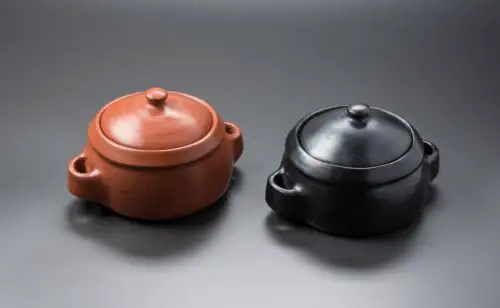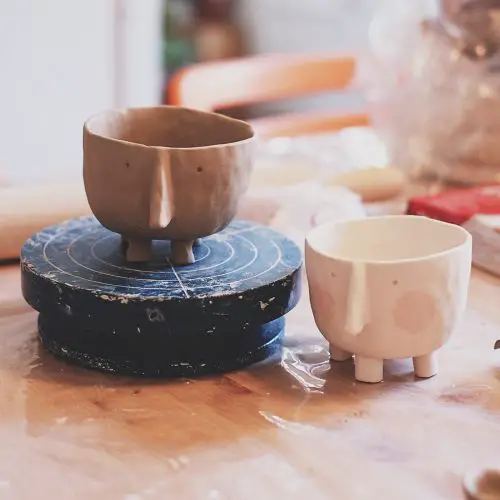Table of Contents
What is pottery?
According to Oxford Languages, pottery is the “art or technique of making artifacts of earthenware, clay, and porcelain of every kind and quality”.
In other words, pottery is the manufacturing of objects from different types of clay or earthenware such as porcelain, stoneware, and others. Some items made of ceramics can be considered art, while other items are for everyday use and decoration.
Among the artistic objects made of ceramics, we can find, for example, antique pieces such as vases or sculptures of gods. Everyday objects are, for example, all objects in connection with table service.
Pottery is also a fundamental part of the history of many places in the world.
Characteristics of ceramics
- Ceramic is fragile. Ceramic is a material that needs to be hard as an end product. However, it must then also be handled with care, since it is still fragile.
- Ceramic is elastic. Ceramic is elastic and can be brought into an infinite number of shapes in its initial state.
- Ceramic is inelastic. Ceramic is elastic during shaping. However, after a period of time in a kiln, the figure becomes unchangeable.
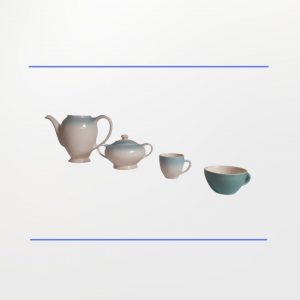
- Ceramic is hard. Ceramic is composed of silicate or sand and its mass is made up of small particles that contribute to its hardness.
- Ceramic is heat resistant. Ceramic can withstand high temperatures. There are different types of ceramics such as stoneware and porcelain, which can withstand temperatures of up to 3,000° C in special kilns for the respective mass.
- Ceramic is resistant to different types of liquids. This material also resists any kind of chemicals, especially paints or glazes.
- Ceramic is abrasion resistant. Thanks to its hardness, the ceramic is abrasion-resistant, i.e. it does not wear out when polished.
History of ceramics
The word pottery comes from the Greek κερ α μικος (keramikos = “made of clay”).
Although there is insufficient data to establish the exact place of origin of pottery, it is known that this ancient practice began 10,000 years before Christ. Then when a group of men decided to experiment with a paste that could be easily shaped by adding water to this mixture. Thereafter, the pieces were exposed to fire to dry. The need at that time arose to have a safe place to store their harvest.
The Pioneers of Pottery
The first pottery was made in the Neolithic (New Stone Age). These items arose from the need to make pots or baskets in which to store crops.
Before the invention of pottery, empty gourds were used to store both food and water. However, these were neither heat nor fire resistant. After the pottery technique was discovered, objects were lined with the dough to make them more resilient.
Geometric shapes, drawings of birds and nature, and their own footprints served as decorative techniques.
During this time, for example, replicas of human figures were also made, which are better known as “Venus”. These pieces represented the fertility not only of humans but also of the earth.
Pottery in Egypt
Pottery was first made in Egypt around 2,800 BC. The first objects were made by women.
The Egyptians were also the first to use the potter’s wheel. They invented a hand-operated disc. This allowed them to improve their technique and designs of the items they made.
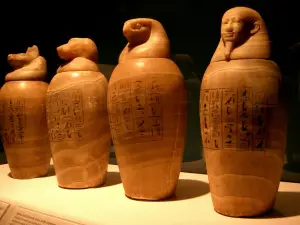
Due to their culture, they made necklaces, vases, cups, and plates. These artifacts were then buried with the deceased who had made them. It is also known that Egyptians made terracotta funerary figures that were buried with the deceased to accompany their souls on their way to the afterlife.
Other items are pots geometrically decorated with animals, taken from nature, and shapes imitating humans. In addition, so-called ” Kanopos ” were made, representing mummified bodies in which the entrails of the deceased were kept.
The Egyptians made their pieces out of two types of clay. The first, is the Nile clay, which was mined from the eroded remains of the Ethiopian mountains found on the banks of the Nile in Egypt, hence its name. A special feature of this clay is that it takes on a brown or reddish color after firing, characteristic of these pieces.
The second clay, marl clay, was mined in the Nile Valley. Distinguished by its yellow or white color, it was mainly used to decorate objects made by the Egyptians because of its color.
Mesopotamia and its new uses for pottery
Pottery was developed in Mesopotamia around 7,000 BC. B.C., and sometime later small pieces were found to aid in farming and animal husbandry tasks. These objects were made of lime and plaster.
In this region, civilizations used clay and pottery techniques to make vessels and also used the household tools at their disposal to sculpt their figures.
Because it was a barren area, bricks were made and used to build buildings, temples, and dwellings.
Various pieces, particularly bricks, were decorated with a substance called colored flint paste, which produced a vitreous glaze that today is better known as porcelain enamel. The silica paste is obtained from various mixtures of minerals with copper; these materials were taken from nature.
Greek artistic ceramics
Thanks to their ancestors, the Greeks learned many techniques and tricks to make their pottery the finest and most elaborate in history.
Pottery was already known in Greece in the preclassic period. The Greeks used pottery to make vessels of all shapes and sizes to use them to carry water, wheat, wine, and other foods. These vessels were decorated with red figures on dark backgrounds such as black and brown.
The figurines made by the Greeks are characterized by being decorated with drawings that not only tell their typical mythological stories but also show their customs, furnishings, and wars.
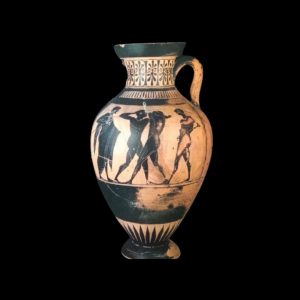
Over time, the pieces were made using molds. The potters not only made molds, but also made sure that the clay used came from special places.
The pieces made by the Greeks were unique because the Athenians used clay that contained iron oxide. This took on an orange color as it dried. In addition, slaves made many pottery works.; it was a way of gaining their freedom back then.
Potters in Etruria and Rome
The Etruscans, an Italian people, made urn-shaped vessels and tombs. These items, typical of their culture, were made from natural black clay.
The figures drawn on these pieces depict mythological figures of the period. They were usually drawn by women.
At that time, people also loved metals such as gold, silver, and bronze, so after many years the pieces were decorated with these materials.
Meanwhile, the Romans learned about pottery about 1,000 years ago. They used the techniques of the Greeks in making their pieces but did not improve on them. They produced crockeries such as cups, jugs, and one of the most representative objects: the oblong amphora.
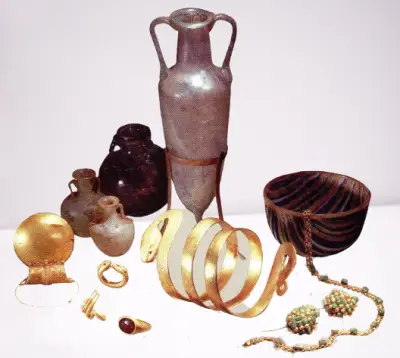
The oblong amphora is a narrow, oblong vessel used by the Romans to carry food and drink. Their structure and colors make them look very elegant.
It should be said that the Romans had two types of pottery. The first was pieces of normal clay with very little detail and embellishment. These served as utility items.
The second was the same type of object, but with the difference that they imitated different metals such as silver and metal. These pieces were used by the upper classes of society.
Moreover, according to a study by the Seville School of Fine Arts entitled “History of Ceramics in Rome”, the glaze was known in the first century. Remember that glazing consists of giving a shine to the item being made.
Women potters in Africa
In Africa, women made most pottery as this process had a lot to do with issues such as fertility.
The oldest pottery found dates from the 6th millennium BC. These items can be divided into two groups:
- Items for domestic use, such as dishes and
- Statues portraying moments of life, such as motherhood, and women and men of this community.
It is noteworthy that these objects were made by hand using raw materials found in nature since the potter’s wheel was still unknown at that time.
As in other places, most of the pottery was used to store and transport food and drink. Some pots were also used for rituals.
Arabia and its new ceramic technique
Arabic pottery was developed in the 8th century and is characterized by its metallic finishes. Because of this mixture, the objects had to be fired at lower temperatures than normal glazes.
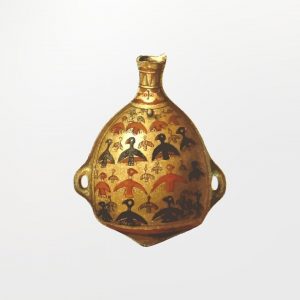
Pots of all sizes and shapes were made in Arabia, in which brown or brown/green colors predominate; bricks and their manufacturing techniques also developed during this period.
Due to Islamic beliefs, animals or human figures were never drawn on the pieces. The depiction of idols was forbidden.
Another important point is that a new technique called ” cuerda seca ” was born, which consists in dividing parts of the piece with very thin bold lines so that the colors do not mix and in this way achieve better designs.
China as a pottery trader
Pottery was first discovered in China 20,000 years ago. The first pieces made in China were human figures representing their dynasties and warriors.
Later, dishes were made. These objects were decorated with drawings of animals, especially fish.
China was the first country to make pottery in kilns. The Chinese built these kilns around 2,000 BC. These ovens were built underground and fired with firewood.
The Chinese used the whitest clay of all and then painted the work in colors such as blue and green.
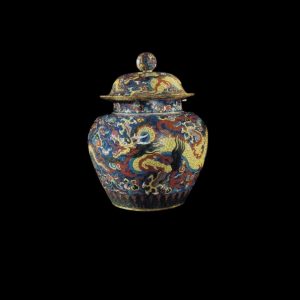
In Sung and Qin dynasty China, the trading of ceramics increased and ceramic wares began to be produced; characterized by glazes; black and orange glaze effects, and shapes that conveyed elegance.
But when the Yuan dynasty fell, the country’s trade declined and China found itself in an economic crisis. Fortunately, years later, during the Ming Dynasty, the economy recovered and ceramics continued to develop, using new techniques and materials for manufacture.
According to art history, some important advances in pottery during the Ming Dynasty were:
- The inclusion of different colors in the glazing and enameling technique,
- The production of pure white porcelain and
- The fuel for the kilns made pottery making more practical.
After this success in ceramic manufacture, tableware items such as mugs began to own endless designs, which led to a surge in tea consumption across the country.
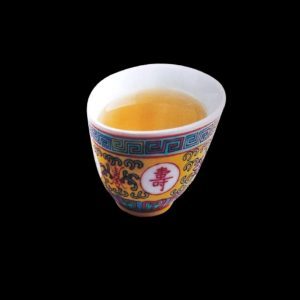
Japan and its ceramic tributes
Many of the techniques used in pottery came to Japan from China.
In Japan, pottery was introduced about 13,000 years ago during the Jōmon period.
According to NIPPONIA, in the 7th century the Japanese sought help from the Chinese to learn new techniques and incorporate new materials into their pottery.
The new techniques included glazing and at the same time colors such as blue and green were added to the goods.
The Japanese adopted many of these techniques and added their history and personal touch to the pieces, making them unique and more valuable. The most common items made were vases and sculptures that served as an homage to their emperors and warriors.
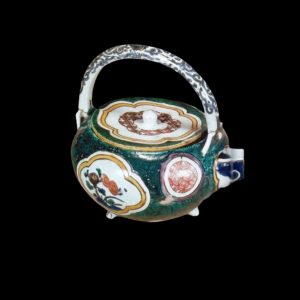
Curiously, the pots manufacturing was intensified thanks to the tea ceremony, a Japanese custom consisting of a hospitable display. Green tea is placed in a cup and hot water is poured over it and then drunk.
Thanks to the tee boom, markets are held in Japan during the months of May and October where, in addition to the typical gastronomy, you can admire all kinds of ceramic figures and their stories.
The advent of porcelain in Europe
Ceramics came to northern and western Europe from Greece in the 18th century. Since no one knew how to handle this material, the objects made were a little different from those already known.
Bowls, plates, and vases were made in Spain. These objects were distinguished by their blue and green with white. In addition, some have been inspired and decorated by Islamic cultures.
This is how the art of ceramics is said to have spread from Spain across the entire continent, even if this has not been proven.
The so-called “Century of Porcelain” came about during this time, because after porcelain became known in Germany, all sorts of objects began to be made from this material. Porcelain was made in Germany because it was cheaper and also very popular.
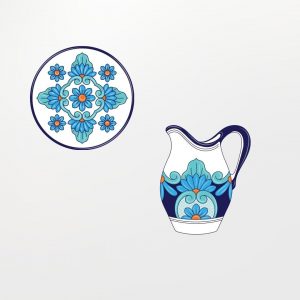
Towards the end of the century objects of clay other than porcelain were increasingly being made in England; this clay was soft-paste porcelain.
Soft-paste porcelain is much whiter, cheaper, more delicate and pure, which caused the porcelain market to decline. This material was also used to make tableware.
Various pottery workshops emerged in England from 1567 and, years later, plates, cups, and jugs decorated with contemporary bird and flower designs were being made in England.
Pottery influenced a custom in England called “tea time”. The name comes from the fact that people used to meet with their porcelain to drink tea between 4 and 5 p.m., which is still a custom today.
Pottery in America
After pottery came to Europe, it also came to America. According to art history, the first people to make pottery were nomads of Mongolian origin. They moved from North America to Central America and finally to South America.
In this continent, the techniques and objects made in ceramics differed greatly from those of other countries throughout history.
The Mayans, the Aztecs, and the Incas were among the first indigenous communities to make objects from clay.
The Mayas come from Honduras, Yucatan, and Guatemala. The most representative objects of this community are sacrificial vessels in the form of animals and various pots, bowls, and vessels decorated with drawings of animals, scenes of ceremonial life, and hieroglyphs.
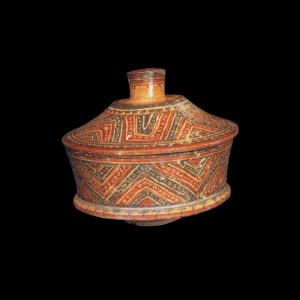
The Aztecs, founders of modern-day Mexico, made all kinds of clay objects, from jugs and vase-like vessels to cups and plates. These pieces are characterized by their base color of brown, yellow or orange with black drawings of animals such as birds, flowers, human figures, and religious symbols of the respective culture.
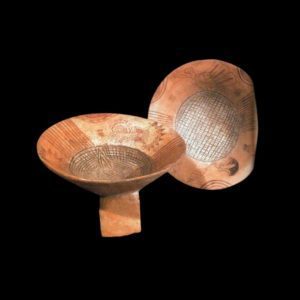
The Incas inhabited the entire Andean region of South America. This community made pieces such as trays, vases of all sizes, especially those with long necks, and kitchen utensils. These were decorated with geometric figures, bees and butterflies.
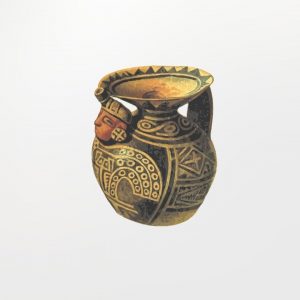
In America, the first pieces were made by hand and without the potter’s wheel, since some countries did not have access to this tool or did not know it yet. However, over time, modern manufacturing techniques also spread.
Decorated with a variety of colors and reliefs, the objects also contained motifs drawn from nature, from plants and animals to aspects of life such as meals, hunts, punishments, and many other customs of each culture.
Ceramic pieces in America are known worldwide for their designs and colors because, unlike in Europe, which uses neutral and light tones, objects in the Americas are found in abundance in colors such as blue, red, orange, yellow, green, brown and more.
Pottery today
Nowadays pottery has evolved all over the world and thanks to this, we have all kinds of tools to make objects out of clay that facilitates this task. In addition, new techniques are being developed in different parts of the world, which thanks to globalization are known throughout the world and can be put into practice.
Each country produces unique ceramic pieces that are still shaped by the history and culture of that country. In Europe, modern ceramics are characterized by their elegance with neutral or light colors and shapes.
In America, there are all kinds of pottery because potters not only make tableware but also figurines and home decorations. Bright colors such as blue, green, and red predominate in these pieces. However, there are also those who prefer more neutral colors as in Europe and these can also be seen on the continent.
Today’s pottery from Africa is still characterized by unique styles and colors such as red, orange, black, yellow, and brown. The embellishments are still geometric figures, but this time they are more even, making the pieces look more elaborate and stylish.
All over the world, today clay is used to make decorative objects, sculptures, gifts, and objects of art. This development of ceramics is undoubtedly one of the most important and can also be traced to many finds all over the world.

